Motorcycle helmets do not have an expiry date sticker or a date of purchase stamp. Instead, they display the date of manufacture, a requirement in place since 1974, typically found on a sticker affixed to the expanded polystyrene (EPS) liner, adjacent to the safety certification label. And this naturally gives rise to a common question — how to check my helmet expiry date?
You can determine the expiration date of a motorcycle helmet by considering both its manufacturing and purchase dates (remember to document this for each purchase). The Snell Memorial Foundation recommends (though not mandated by law) replacing the helmet after 5 years of regular use from the purchase date, or 7 years from the manufacturing date (whichever comes first).
For instance, if you purchased AGV’s AX-9 adventure helmet on August 1, 2025, and started using it immediately, you should consider replacing it by August 1, 2029. Conversely, if the helmet was manufactured on January 1, 2025, it should be replaced by January 1, 2032, regardless of the date of purchase, following regular use. I attribute this to material degradation caused by UV radiation, moisture, oxygen, body fluids, hair oils, and normal wear and tear.
Besides, replacement may be necessary after a motorcycle accident or an inadvertent drop of the helmet from a significant height resulting in cracks in the outer shell.
Find Your Perfect Motorcycle Helmet: Top 5 Picks Today
Scroll right to find buying options, compare prices, and possibly snag exclusive discounts from sellers.
| Helmet Name | Category | Shell Sizes | Check & Shop Now |
|---|---|---|---|
| AGV AX-9 | Best Adventure | 3: XS-MS, ML-XL, 2XL | RevZilla | MotoSport | Cycle Gear |
| Shoei RF-1400 | Best Quietest | 4: XS-S, M, L, XL-XXL | RevZilla | J&P Cycle | Amazon |
| Schuberth C4 Pro | Best Modular/Flip-Up | 2: XS-LG, XL-3XL | RevZilla | Cycle Gear | J&P Cycles |
| Arai Corsair-X | Best Mid-High Race | 5: XS, S, M/L, XL, 2XL/3XL | RevZilla | Cycle Gear | Amazon |
| Scorpion EXO-R1 Air | Best Street | 3: XS-M, L, XL-3XL | RevZilla | J&P Cycles | Amazon |
Understanding Impact Considerations for Evaluating Helmet Damage

Minor drops (falling from the seat of your bike or from a similar height) when the helmet is not being worn typically should not cause any damage except for cosmetic scratches. Bruce Porter, Director of Marketing and Professional Motorsports Promotion for Arai Helmets, emphasized:
“A helmet is an action and reaction protective gear with a soft EPS liner inside and a hard outer shell. And if there isn’t 5 kilos (roughly 12 pounds) of something like a human head inside to react against it, it will just react to its own weight of around 3 pounds. For the EPS to compress, a head needs to be inside the helmet. And once the EPS compresses — effectively absorbing impact forces and reducing the risk of severe head injury by about 75% — it won’t re-expand. This is why you need to discard the helmet after a substantial impact.”
That said, manufacturers have varying recommendations of when to replace your helmet.
A Brief Guide to Expiration Dates of Leading Helmet Manufacturers
| Brand Name | Expiry Date | Common Shell Material | Certification Standard |
|---|---|---|---|
| AGV | 7 Years | Carbon Fiber Composite | DOT, FIM, SHARP, ECE |
| Arai | 7 Years | Complex Laminate Construction (CLC) (Fiberglass Composite) | SNELL, ECE, FIM, SHARP, DOT |
| Schuberth | 5-7 Years | Fiberglass Composite | SHARP, DOT, ECE |
| Shoei | 5 Years | Advanced Integrated Matrix (AIM+) (Fiberglass Composite) | ECE, SNELL, FIM, SHARP, DOT |
| Alpinestars | 5 Years | Carbon Fiber | DOT, FIM, ECE |
| Klim | 5 Years | Carbon Fiber | ECE, DOT |
| Fox | 5 Years | Polycarbonate | DOT, ECE, SNELL |
| Fly | 5 Years | Carbon Fiber, Kevlar, and Fiberglass Composite | SNELL, DOT, ECE |
| Shark | 5 Years | Thermoplastic or Fiberglass Composite | ECE, FIM, DOT, SNELL |
| Icon | 3-5 Years | Polycarbonate | SHARP, DOT, ECE |
| HJC | 3-5 Years | Fiberglass/Aramid/Polyester-Resin Composite Fiber | SNELL, SHARP, ECE, DOT, FIM |
| Scorpion | 3-5 Years | Thermodynamic Composite | ECE, SNELL, FIM, SHARP, DOT |
| Bell | 3 Years | Fiberglass Composite or Polycarbonate | FIM, SHARP, ECE, DOT, SNELL |
P.S.: Alpinestars has, in 2023, unveiled their latest achievement — the ECE 22.06, DOT, and FIM-certified Supertech R10 Carbon Helmet, marking their first full-face motorcycle helmet release since 1963. This remarkable helmet, developed over the past 5 years, stands as a testament to their dedication. Worth noting, similar to all AGV helmets, the Alpinestars Supertech R10 (with a manufacturer-recommended expiry date of 5 years, unlike AGV’s 7 years) also lacks SNELL certification.
Nevertheless, this evaluation of helmet expiration dates also hinges on several variables since motorcycle helmets do not expire if they are unused, as long as you store them (preferably in a helmet bag) in a dry place free from humidity, extreme temperatures, and direct sunlight exposure.
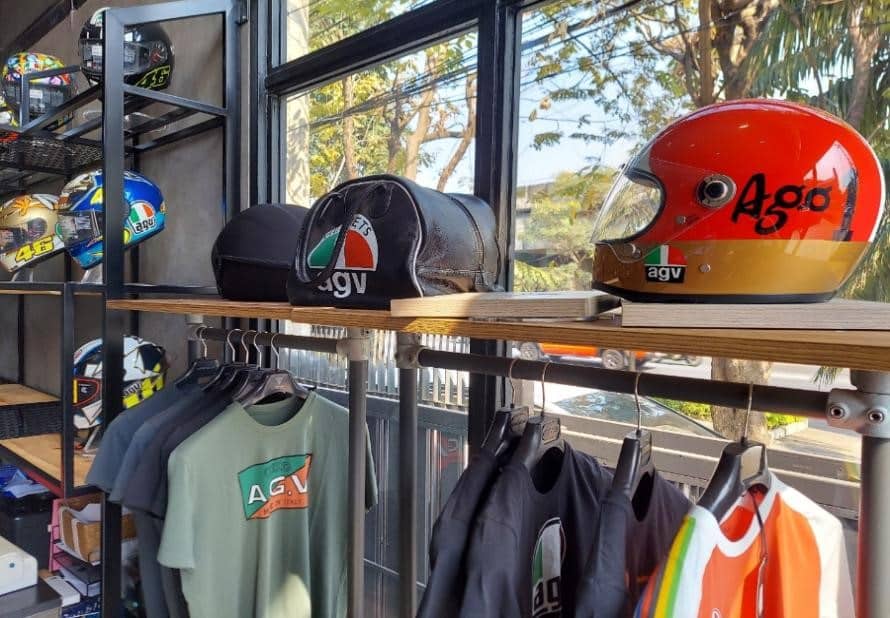
By combining appropriate storage practices with proper usage, expensive helmets could potentially last for more than 7 years with minimal heavy use. You might only need to replace certain inner parts like liners, cheek pads, chin straps, visors, and any movable components. But If your helmet is no longer serviceable due to its age, there are creative ways to repurpose it.
From a safety standpoint, personally, I would opt for a well-aged AGV, Shoei, or Arai helmet over a new cheap run-of-the-mill brand. But, hey, why take chances when you can upgrade to the latest model (if the chance arises and your budget allows), equipped with advanced features intended to maximize your safety and comfort?
11 Signs to Help You Determine When Your Helmet Has Expired
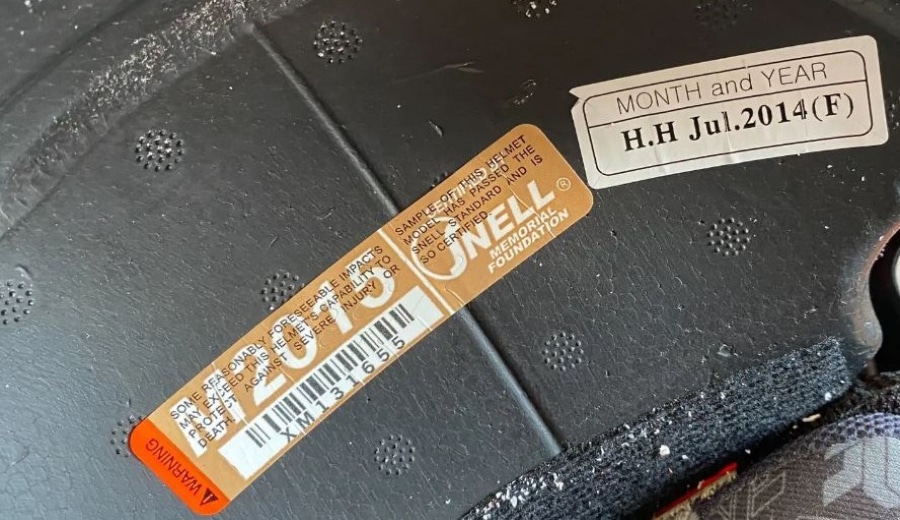
In addition to relying on the technique of using the date of purchase and the date of manufacture to determine the optimal time for a replacement, there are distinct indicators that signal your helmet has reached its expiration.
You see, I owned my first helmet, the 1972 AGV X-3000 — the first full-face motorcycle helmet — prior to the 1974 law that mandated the inclusion of the date of manufacture on helmets. As a result, it was challenging to ascertain the dates. And so, to determine whether my helmet had expired, I relied on these 11 easy-to-identify signs, which I still consider relevant to this day:
1. Excessively Faded Outer Layer
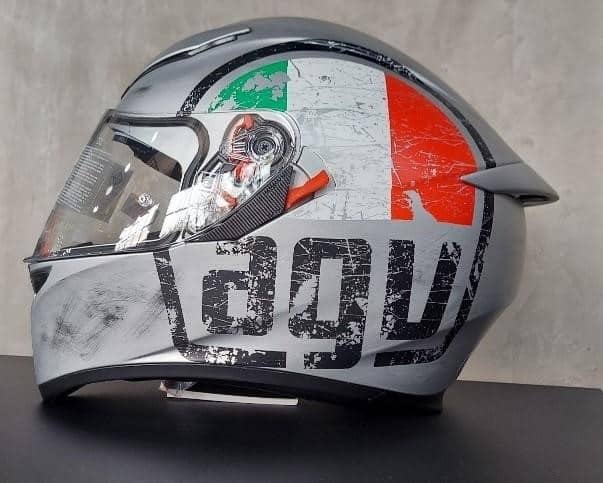
The most apparent sign will be a lid that has faded excessively. Analogous to any article of attire, a helmet gets worse over time with use – the more it’s worn, the more worn out it becomes.
Helmet shells vary in material. Premium models (above $1,000) typically employ carbon fiber composites. High-end options ($500-1,000) commonly use fiberglass in various forms. Mid-range helmets (around $450) are often constructed with Kevlar, while entry-level ones (below $300) typically utilize polycarbonates.
Each of these materials boasts an impressive lifespan. Fiberglass, for instance, can endure for up to 50 years or even longer. Carbon fiber, on the other hand, remains stable indefinitely. And they all will not break down by themselves. Instead, carbon fiber composites, fiberglass, Kevlar, and polycarbonates deteriorate due to constant exposure to external factors like subvisible rays of light, moisture, and oxygen.
Moisture absorption, for instance, can result in the deterioration of a material’s tensile properties by weakening the epoxy matrix interface. On the other hand, exposure to UV light triggers premature degradation in sheets and panels by breaking down their epoxy resin. Over time, oxidation occurs, gradually eroding the material’s surface and giving rise to a lackluster, blurred, and chalk-like appearance.
Specifically, continuous exposure to UV light can lead to the weakening of fiberglass through a phenomenon referred to as “fiber blooming.” The consequence of this is the fiberglass helmet shell exhibiting a tendency to fade and take on a brownish hue, while a polycarbonate helmet shell, under prolonged sunlight exposure, may develop a yellowish tint.
Furthermore, when ultraviolet radiation and oxygen interact in a process termed “photo-oxidative degradation,” the breaking of chemical bonds and polymer chains takes place within the material. This leads to the generation of radicals and results in a reduction of molecular weight. As a result, the mechanical properties of the material become compromised, ultimately leading to a fragile outer shell that provides limited protection against impacts.
2. Cracked Shell
The helmet shell bears the brunt of the force, scrapes, and cuts in every crash. No, simply dropping your helmet from the bench does not make it a write-off, contrary to common misconception. But I would replace my helmet after a considerable crash where I bang my head. After all, helmets are not made of metal, you know!
An impact of considerable force can deform and weaken the outer shell even if the damage may not be visible. This is true for all shell materials, whether polycarbonate, fiberglass, or carbon fiber. I was stunned to learn that polycarbonate (thermoplastic) is the cheapest of the bunch but has excellent impact dissipation (in the shell before the EPS is reached) compared to the much harder fiberglass and carbon fiber shells.
Cheaper lids, like the HJC i90, with polycarbonate shells perform better for low speed falls but suffer greater abrasive damage when sliding on the pavement. In contrast, carbon fibers can be five times stronger and twice as stiff as steel. But, remember the fibers only form a matrix held together by much weaker epoxy resin (more similar to plastics).
So, even the most expensive helmets, such as the AGV Pista GP RR sport & touring full-face helmet, can develop cracks due to repeated minor impacts, especially if they’re consistently hitting the floor with the same spot.
3. Compressed EPS Liner
EPS is the main crumple zone in a helmeted crash. What this means is that the layers are designed to collapse and absorb much of the force before it is transferred to your head. This is very similar to modern cars that have a softer front end and a reinforced passenger cabin. These zones work by increasing the duration during which the force acts on the mass, reducing the actual force transferred.
Here is a little physics thought experiment; say you are traveling down the street at some velocity, and someone thoughtlessly opens a car door three meters from your current position. If the speed is above 28 mph, you will have less than 0.2 seconds to react, which is nearly impossible, and a crash is inevitable at this point:
Impulse = (Force) x (Change in Time) = (Mass) x (Change in Velocity)
Now, the right-hand side cannot change (mass is constant, and the velocity is fixed at the moment of impact). Your fate is not sealed, however, because we can vary the change in time (lengthen the duration of the crash) to reduce the amount of force acting on your head for the same impulse (change in momentum). If the crash happens slowly, so to speak, less force is there to contend with, and reduced likelihood of severe brain injury as per the new ECE 22.06 Brain Injury Criterion.
It goes without saying that the EPS layer is good for only a single crash, just like you wouldn’t continue down the road with a wrecked car hood. Before then though, the EPS layer will outlast almost every other component of the helmet and remain unperturbed by oils, sweat, cleaning agents, and other chemicals it encounters during its tenure.
4. EPS Liner Detached from the Outer Layer
And while still on the topic of EPS layering, it is not detachable from the helmet shell, so you can’t simply swap it for a fresh one after a crash. For proper operation, most EPS layers are firmly glued to the shell of the helmet, and if it comes off, perhaps it’s time for a new helmet!
While the EPS itself is durable, the adhesives used to bond it to the outer shell may degrade over time, even without heavy use. And it may come undone. The degradation is more severe if the helmet is improperly stored in a hot and/or humid environment.
Additionally, adhesives, much like plastics, are sensitive to cleaning solutions containing petrochemicals, acid or alkali-based solvents. Use only mild soap and neutral water to clean the impact-absorbing layer, observing the best helmet-cleaning practices to ensure the longevity of the EPS and shell assembly.
5. Compacted and Distorted Comfort Liner/Padding

The comfort liner is just as the name implies: a provision for comfort and safety inside of the helmet. It keeps the skin cool and dry while further cushioning you from slight bumps along the road. If you ask me, this is the component that makes or breaks my relationship with any particular helmet. In fact, it’s the second most susceptible component, after the outer shell, because it has to deal with the friction of putting on the helmet and a horde of chemicals from bodily secretions and hair products.
On most of the helmets I have tried, the comfort liner is the first to give in to the pressures of normal use, even when seldom used. Poor-quality foam would collapse around the cheeks, and the entire helmet would lose that snug fit that I always want with every new helmet: A motorcycle helmet should fit snugly for maximum effectiveness.
But even on the premium cheek pads, I err on the side of caution by using only mild soap and lukewarm water to handwash the interior of my helmet, as shampoos, conditioners, and other cleaning products can have an adverse effect on the liner as well.
If it’s repeatedly getting mucky with sweat, hair oils, and all manner of grime and simply refuses to stay fresh with regular clean, it’s simply not for me. Stickiness inside the helmet raises hygiene concerns and creates discomfort, which leads to distracted riding and can be dangerous to say the least. Luckily, the quietest helmets from leading brands offer cheek pads made with sturdy foam to last a thousand rides and replacements for the usually removable and washable interior comfort liner.
So, yes, for my daily riding helmet – one that is well within its useful lifespan but becomes quite stuffy – I prefer to replace the inner lining to regain that refreshing new sensation.
6. Loose Chin Straps
What is the use of wearing the best helmet money can buy if it’s not going to stay on your head in the event of a crash? The retention mechanism, also called the chin strap, makes sure of this. And all helmets have one except the Australian-designed and owned VOZZ RS 1.0 helmet, which opens fully from a hinge at the top. I’m not entirely convinced that the fancy design can pass the roll-off test – a mandatory assessment to ascertain that the helmet can stay on in the event of a crash – to pass the current ECE 22.06 standard.
The Double-D ring, or simply D-ring chin strap, is the more reliable helmet retention system, as compared to the micrometric quick-release buckle frequently used in touring and urban commuter helmets. While most riders find D-Ring mechanisms a bit fiddly, I think it’s really comfortable, albeit reasonably less convenient than quick releases.
But hey, for me, neither is a deal breaker because although SNELL insists on the Ds, ECE 22.06 only requires a “fit for purpose” fastener – one that can survive a yank with a 10 kg load dropped from 0.75m – and is easy to close and undo, only opening when the user intends and with no possibility of partial latching.
7. Damaged Base Plates
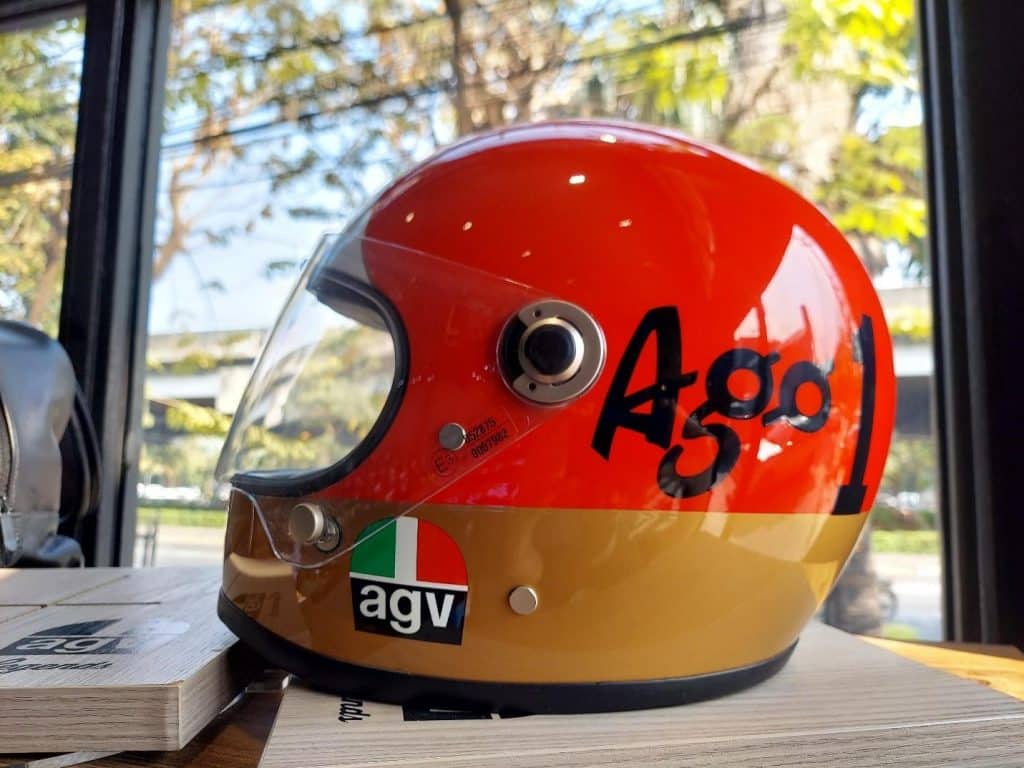
Base plates serve as the pivotal support for the visor mounting bracket mechanism. They are some of the most susceptible parts of a helmet that tend to grab on the pavement even in a minor crash. Their design allows for quick and tool-free visor changes while staying out of the way for an unobscured view of the peripherals. Almost every other frontline manufacturer makes base plates for their flagship models because they obviously see it as a fragile part of the lid.
I have had the nasty experience of shredding base plates on my Shoei CNS 1, and they were like butter feeding the rough pavement (definitely the better outcome than digging in and twisting action), but I didn’t bother replacing them because, well, EPS was already crashed, and I needed a replacement helmet anyway.
8. Issues with Base Trim
Whether you use it on a daily basis or it’s been sitting on a shelf, a torn or dried-out base trim is a red flag for a motorcycle helmet. I’ve seen avid riders with base trims that are all cracked up or grimmy, and I can tell that neither one exuded confidence in the safety of the whole headgear.
Interestingly, they sell these too as helmet servicing parts. But unless you are restoring an Ago 1 for the family or collection, I don’t see the point in patching a probably already-expired helmet that has outlived its protectiveness.
9. Compromised Face Shield
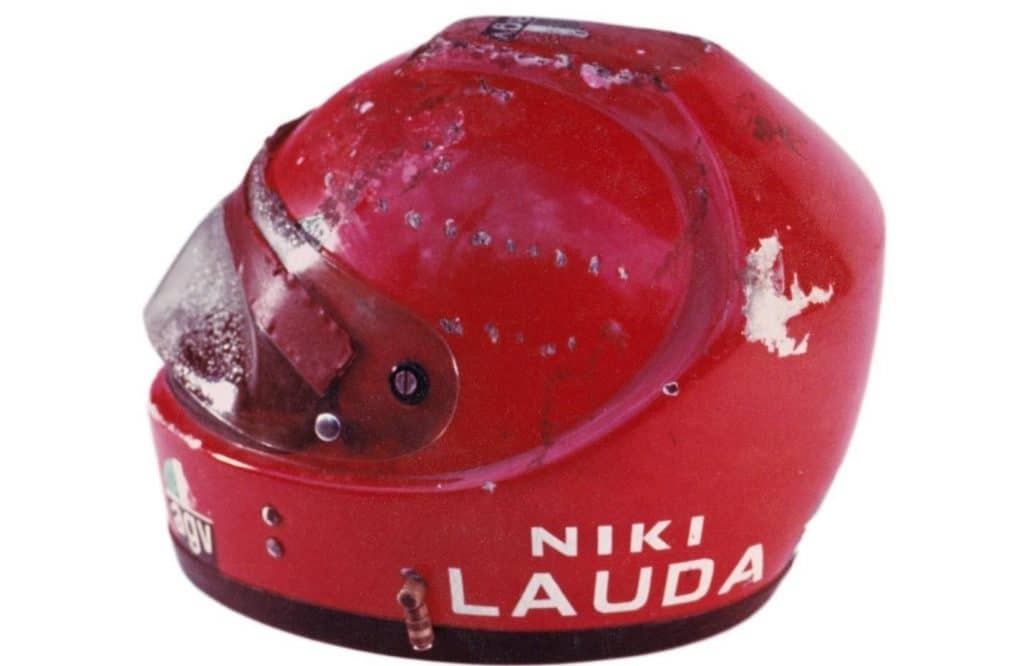
The face shield keeps dust, bugs, and debris from your face and eyes, while allowing you to see the road ahead and parts of the beast beneath you. Riding with a face shield configuration prepares you for a variety of riding conditions and typically includes an internal sun visor to shield against the sun’s intense rays.
I prefer a clear visor with zero tint and pinlock ready for when I encounter that perilously chilly weather. And while beginners obsess over anti-fog solutions, veterans like myself know to crack the helmet slightly open and instantly get rid of all the cloudiness inside.
What bugs me the most, particularly when riding at night, are the minor scratches and dents that appear on the shield, causing the refraction of oncoming headlights. During the day, they can trap dust and cause severe distortion of images on the mirrors and even the road ahead.
Photochromic visors have a special treatment that allows them to change their tint to adapt to the ambient lighting conditions on the road. This technology makes use of silver chloride particles, which are spread across the visor material and darken when UV light is detected. That is to say, the visor remains clear indoors and under mild light and darkens with an increase in direct sunlight.
Regrettably, over time, the material eventually becomes less reactive to light and takes longer to change between states with prolonged exposure to UV. And so, photochromic face shields may need to be replaced every 2 years. A yellowish tint may be a sign that your photochromic visor is worn out.
Generally, visors become hazy due to oxidation, and because we cannot test the light transmittance, a good rule of thumb is to replace the face shield once every 3 years or whenever it is badly scratched, obscuring vision.
10. Impaired Visor Seal
Normally, riding with a visor that doesn’t shut all the way wouldn’t be a problem unless you are “making the turn,” going speeds above 100 miles per hour. At highway speeds though, wind noise and buffeting become a serious bother, which can cause fatigue and distracting, endangering you as a rider.
So yes, when it starts to get chilly, wet, or noisy inside my helmet for whatever reason, I take it the lid is whispering that it’s due for retirement. And woe unto you if you do not listen!
11. Damaged Vent Covers
Ventilation inside the helmet is not just a luxury we lacked in the earliest full-face models of the 1970s, but a cornerstone for safety in a modern helmet. Ah, yes! We need our air to perform optimally.
If vents are clogged with lint and debris, it’s nothing a jet of compressed air cannot solve, but if nothing works, the helmet belongs in a landfill. Oh, no! Please don’t tell me you burn your old helmets.
Michael’s Summary and Conclusion
The question is how do I check my helmet expiry date, but the answer is not as easy or simple as the person seeking for its clarity might expect. I can state with certainty, based on my experience of over 30 years working within the motorcycle helmet industry, that the answer to this question is subjective and relies more on the marketing program of the helmet manufacturer than on any concrete scientific or engineering facts.
A warranty usually lasts only for a year, perhaps two, so the expiration of the warranty is not the same thing as the expiration of a helmet, for which there truly is no exact point of expiration. When a helmet has outlived its safety effectiveness, it’s because of so many variables that are impossible for any company or any individual to determine.
And it’s not just the common factors that one might guess, like how many times a week or a month, or a year the helmet is used, in what temperatures it has been stored, and whether it was subjected to any impacts. Those are the things that most people could guess would affect the longevity of the helmet. But, there are factors that most people are not aware of, such as the body chemistry of an individual.
In the over 25 years I’ve worked with AGV helmets, I have witnessed numerous instances where helmets literally deteriorated on the inside due to the sweat of the specific user.
This isn’t a common occurrence; in fact, it’s rather rare. But when you’re selling thousands, even millions of helmets, a certain percentage is inevitably prone to encountering this problem. I’ve come across helmets with interiors so severely damaged that they resembled the effects of acid being poured on them. For most people, this would be difficult to envision, and I would never have anticipated it myself if I hadn’t witnessed it firsthand.
So, when asking the question how do I check my helmet expiry date, the initial point to clarify is whether you seek a date to fulfill specific racing sanctioning body regulations and government standards or if you are genuinely interested in determining when the helmet is no longer safe for your personal use.
If you are looking for an expiration date established by the manufacturer, you should refer to the governing body whose regulations you are aiming to meet. Occasionally, they may demand adherence to a helmet certification standard from a specific year or a particular identification number. In other instances, they might stipulate a general time limit, such as three or five years.
However, if your aim is to address the question of when the helmet is no longer safe for use, this is a matter that cannot be definitively answered in black and white. To accurately assess this, you need to consider how you’ve utilized your helmet, its current condition, and most crucially, whether it has encountered severe impacts, specific chemicals, or has been stored in extreme temperatures—either excessively hot or cold.
In such instances, the helmet should be replaced after exposure to any of these factors, regardless of its age. On the other hand, if the helmet is 10 years old, has seen minimal use, and has been well-maintained, I wouldn’t hesitate to wear it nor would I have concerns about its safety.
At the end of the day, as a rider, you must weigh all these considerations and make a logical decision for yourself. Of course, if you err on the side of caution, it’s always better to replace the helmet with the newer model, regardless of its condition. And I state all this based on more than 30 years of working for major helmet brands such as AGV, Suomy, KBC, Sparx, MDS, Vemar, and Marushin.

I've diligently categorized my motorcycle gear recommendations into all available categories, with the aim of providing you with a comprehensive analysis that showcases the absolute best options for all your needs. These items are the culmination of in-depth research, extensive testing, and personal use throughout my vast experience of 50+ years in the world of motorcycling. Besides being a passionate rider, I've held leadership positions and offered consultancy services to reputable companies in over 25 countries. To See Top Picks and the Best Prices & Places to Buy: Click Here! |
FAQs — I Have The Answers!
Q: How Do I Check My Helmet Expiry Date?
To check a helmet’s expiry date, find the manufacturing date on the sticker attached to the EPS liner beneath the comfort liner. Then, add 5 years from the purchase and initial use date or 7 years from the manufacturing date to determine the expiry.
Q: Does a Helmet Have An Expiry Date?
No, helmets don’t have an expiry date. Instead, they have a manufacturing date that you can use to determine the motorcycle helmet expiry date. You can also consider the date of purchase for reference.
Q: Where Can I Find the Date of My Helmet?
You can find your helmet’s manufacturing date on a sticker attached to the EPS liner beneath the comfort liner, along with a production serial number and certification. To calculate its expiry date, add 7 years from the manufacturing date or 5 years from the date of first use.
Q: What Is the Date Code on a Helmet?
The date code on a motorcycle helmet is a sticker, similar to the stamp below the brim of a hard hat, showing its exact month and year of manufacture.
Q: How to Check Motorcycle Helmet Expiry Date?
To determine the expiration date of a motorcycle helmet, calculate it by adding 7 years to the date of manufacture 0r 5 years to the date of first use.
Q: How Do I Know If My Motorcycle Helmet Is Expired?
The helmet will expire after 5 years of initial use or 7 years from the date of its manufacture, whichever comes first.
Q: What Is the Expiry for Motorcycle Helmets?
The expiry for motorcycle helmets is when materials used in their construction begin to show signs of aging and deterioration due to exposure to elements and the passage of time.
Q: How Do You Know If a Helmet Is Original?
An original helmet is typically sold by an authorized and reputable vendor and will come with proper packaging, verifiable stickers, relevant booklets, labels, and tags. You can also verify its authenticity by checking if its weight matches the specifications, inspecting the paintwork for impeccable quality, and ensuring the visor is free from scratches.
Q: How Do I Know If My Motorcycle Helmet Is Still Good?
Your motorcycle helmet is still good if it is still within its manufacturer-recommended lifespan of 7 years, has not been in a crash, and does not exhibit any of the symptoms described above.
Q: Do DOT Motorcycle Helmets Expire?
Yes, all DOT motorcycle helmets expire over time, leading to reduced effectiveness and protection. This principle applies to all helmets; regardless of their build quality and certification (SNELL, FIM, SHARP, ECE), they will inevitably degrade and provide lower protection as time goes on.
Information for this article was partially sourced and researched from the following authoritative government agencies, educational institutions, and nonprofit organizations:
LPP/A













